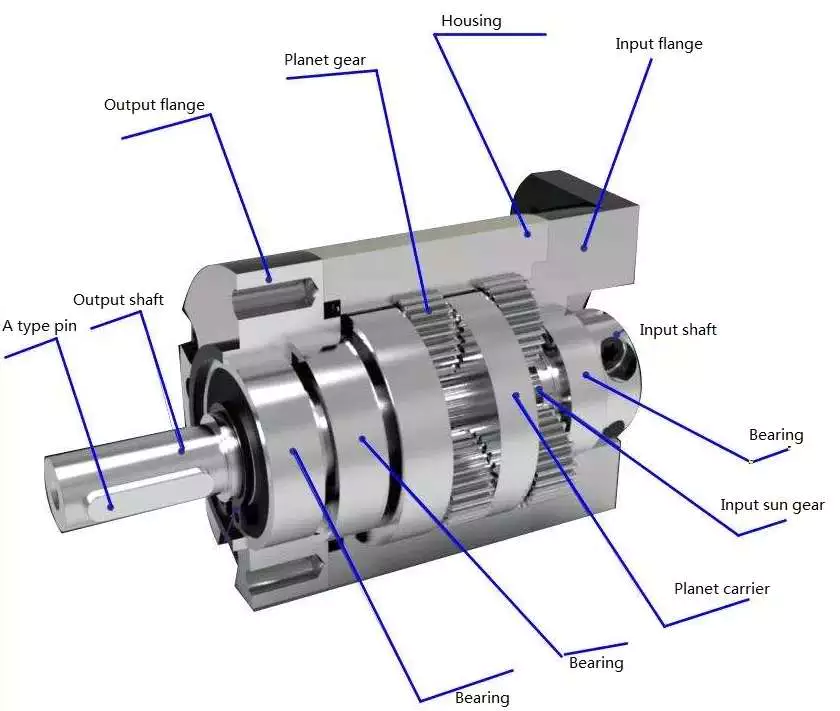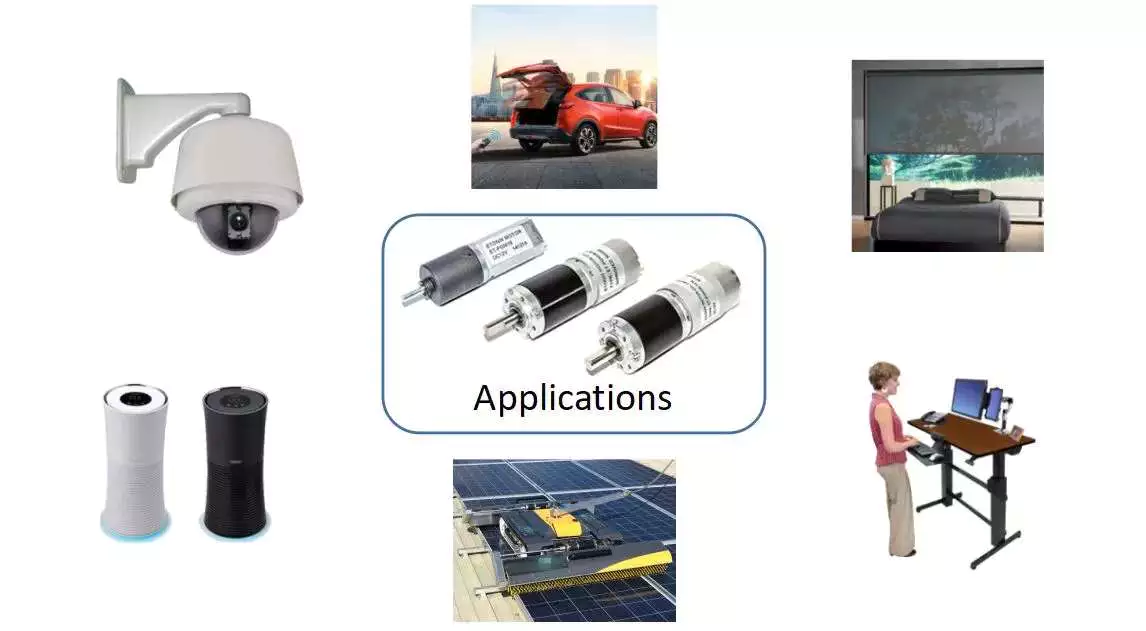Warranty: 3months-1year
Model Number: 775 DC motor, ZYMX
Usage: BOAT, Car, Electric Bicycle, FAN, Home Appliance
Type: Micro Motor
Torque: <3.2kg high torque
Construction: Permanent Magnet
Commutation: Brush
Protect Feature: Totally Enclosed
Speed(RPM): 15000RPM
Continuous Current(A): 12A
Efficiency: IE 1
Speed: Constant Speed
Voltage(V): 12v-24v
Power: DC RS-775/755
Maximum speed: 15000RPM
Voltage: DC 24V
Brush: carbon brush motor
Application: Home Applicance
Motor type: PMDC Brushed Motor
Certification: ce
Packaging Details: Unit Type: piece Package Weight: 0.42kg (0.93lb.) Package Size: 15cm x 15cm x 15cm (5.91in x 5.91in x 5.91in)
Port: HangZhou, HangZhou
High rpm RS-775 motor for Power Tools and Drill
Product NameRS 775 6V 12V 24V dc motorCustomized Model ZYMXCustomized voltage6V 12V 24VMaterialPrecious mental-brush DC motorTypeMicro DC brush motorMotor body size42*66.7mmWeight0.4KGCertificationCEApplicationBoat, Car, Electric Bicycle, Fan, Home Appliance, cordless power tools drill & screwdriver, Industrial Note: These are only the typical technical data of 24V 775 DC motor for reference, other specification such as voltage, speed, torque, shaft length can be customized.
Main Features of our supply of 24V DC motor 775:1.Supply to all around the world2.Professional Perfomance Motor supplier 3.Micro DC brush motor4.packing:carton or wooden case,Depending on your demand5.Matrial:Precious mental-brush DC motor
Detailed Images Specifications of DC motor775:A.High rpm 775 motors ,B.RS – 775 dc motor for power tools motor C.DC motor 24V 15000rpm 775 1.High torque high speed long-life2.Motor Voltage:12v-24v3.The shaft:dia 5.0mm ,0 shaft ,D-CUT shaft ,double shaft ….4. Motor Diameter:42mm length:66.7mm It is a tube shape5.Output power:approx288w6.Carbon-brush motors Durable, reasonable price7.The motor weight:3.2kg(Approx)8.Motor direction of rotation :CW &CCW9.12v-36v dc Motor Typical Applications:cordless power tools:drill & screwdrive10.775 DC Motors specefication and shaft length can be tailor-made according to customer’s requirements
Appliciation DC motor 775 are usually utilized by the purposes below:
Sports/Fitness equipment, CZPT care equipment, Home Appliance, Various machines, Furniture, Arcade machines, Vehicle, Constructions, Robots, Power tools, Factory use: Others: instruments, satellite antennas, card readers, automatic flock feeders, teaching equipment,automatic valves, paper shredders, parking equipment, ball dispensers, cosmetics & cleaning products, and motorized displays.
Our Service Our company have been adhering to the people-oriented.It has been in strict compliance with the ISO9001-2000 quality management system of DC motor 775 .We have prefect management,sophisticated technology,advanced yielding and testing equipment.So we provide customers with safe,reliable and high-quality products.Our goal is not defective and we want to get satisfaction from customers.1. we are CZPT to design, adjust,and manufacture the 775 DC motors according to your requirements.2. Sample order 3. We will reply you for your inquiry in 24 hours.4. after sending, we will track the 775 DC motor for you once every 2 days, until you get the products. When you got the goods, test them, and give me a feedback.If you have any questions about the problem, contact with us, we will offer the solve way for you. Packing & Delivery Unit Type: piece Package
Weight: 0.42kg (0.93lb.)
Package Size: 15cm x 15cm x 15cm (5.91in x 5.91in x 5.91in)
The Benefits of Using a Gear Motor
A gear motor works on the principle of conservation of angular momentum. As the smaller gear covers more RPM and the larger gear produces more torque, the ratio between the two is greater than one. Similarly, a multiple gear motor follows the principle of energy conservation, with the direction of rotation always opposite to the one that is adjacent to it. It’s easy to understand the concept behind gear motors and the various types available. Read on to learn about the different types of gears and their applications.
Electric motor
The choice of an electric motor for gear motor is largely dependent on the application. There are various motor and gearhead combinations available, and some are more efficient than others. However, it is critical to understand the application requirements and select a motor that meets these needs. In this article, we’ll examine some of the benefits of using a gear motor. The pros and cons of each type are briefly discussed. You can buy new gear motors at competitive prices, but they aren’t the most reliable or durable option for your application.
To determine which motor is best for your application, you’ll need to consider the load and speed requirements. A gear motor’s efficiency (e) can be calculated by taking the input and output values and calculating their relation. On the graph below, the input (T) and output (P) values are represented as dashed lines. The input (I) value is represented as the torque applied to the motor shaft. The output (P) is the amount of mechanical energy converted. A DC gear motor is 70% efficient at 3.75 lb-in / 2,100 rpm.
In addition to the worm gear motor, you can also choose a compact DC worm gear motor with a variable gear ratio from 7.5 to 80. It has a range of options and can be custom-made for your specific application. The 3-phase AC gear motor, on the other hand, works at a rated power of one hp and torque of 1.143.2 kg-m. The output voltage is typically 220V.
Another important factor is the output shaft orientation. There are two main orientations for gearmotors: in-line and offset. In-line output shafts are most ideal for applications with high torque and short reduction ratios. If you want to avoid backlash, choose a right angle output shaft. An offset shaft can cause the output shaft to become excessively hot. If the output shaft is angled at a certain angle, it may be too large or too small.
Gear reducer
A gear reducer is a special kind of speed reducing motor, usually used in large machinery, such as compressors. These reducers have no cooling fan and are not designed to handle heavy loads. Different purposes require different service factors. For instance, a machine that requires frequent fast accelerations and occasional load spikes needs a gear reducer with a high service factor. A gear reducer that’s designed for long production shifts should be larger than a machine that uses it for short periods of time.
A gear reducer can reduce the speed of a motor by a factor of two. The reduction ratio changes the rotation speed of the receiving member. This change in speed is often required to solve problems of inertia mismatch. The torque density of a gear reducer is measured in newton meters and will depend on the motor used. The first criterion is the configuration of the input and output shafts. A gear ratio of 2:1, for example, means that the output speed has been cut in half.
Bevel gear reducers are a good option if the input and output shafts are perpendicular. This type is very robust and is perfect for situations where the angle between two axes is small. However, bevel gear reducers are expensive and require constant maintenance. They are usually used in heavy-duty conveyors and farm equipment. The correct choice of gear reducer for gear motor is crucial for the efficiency and reliability of the mechanism. To get the best gear reducer for your application, talk to a qualified manufacturer today.
Choosing a gear reducer for a gear motor can be tricky. The wrong one can ruin an entire machine, so it’s important to know the specifics. You must know the torque and speed requirements and choose a motor with the appropriate ratio. A gear reducer should also be compatible with the motor it’s intended for. In some cases, a smaller motor with a gear reducer will work better than a larger one.
Motor shaft
Proper alignment of the motor shaft can greatly improve the performance and life span of rotating devices. The proper alignment of motors and driven instruments enhances the transfer of energy from the motor to the instrument. Incorrect alignment leads to additional noise and vibration. It may also lead to premature failure of couplings and bearings. Misalignment also results in increased shaft and coupling temperatures. Hence, proper alignment is critical to improve the efficiency of the driven instrument.
When choosing the correct type of gear train for your motor, you need to consider its energy efficiency and the torque it can handle. A helical geared motor is more efficient for high output torque applications. Depending on the required speed and torque, you can choose between an in-line and a parallel helical geared motor. Both types of gears have their advantages and disadvantages. Spur gears are widespread. They are toothed and run parallel to the motor shaft.
A planetary gear motor can also have a linear output shaft. A stepping motor should not operate at too high current to prevent demagnetization, which will lead to step loss or torque drop. Ensure that the motor and gearbox output shafts are protected from external impacts. If the motor and gearbox are not protected against bumps, they may cause thread defects. Make sure that the motor shafts and rotors are protected from external impacts.
When choosing a metal for your gear motor’s motor shaft, you should consider the cost of hot-rolled bar stock. Its outer layers are more difficult to machine. This type of material contains residual stresses and other problems that make it difficult to machine. For these applications, you should choose a high-strength steel with hard outer layers. This type of steel is cheaper, but it also has size considerations. It’s best to test each material first to determine which one suits your needs.
In addition to reducing the speed of your device, a geared motor also minimizes the torque generated by your machine. It can be used with both AC and DC power. A high-quality gear motor is vital for stirring mechanisms and conveyor belts. However, you should choose a geared motor that uses high-grade gears and provides maximum efficiency. There are many types of planetary gear motors and gears on the market, and it’s important to choose the right one.
First stage gears
The first stage gears of a gear motor are the most important components of the entire device. The motor’s power transmission is 90% efficient, but there are many factors that can affect its performance. The gear ratios used should be high enough to handle the load, but not too high that they are limiting the motor’s speed. A gear motor should also have a healthy safety factor, and the lubricant must be sufficient to overcome any of these factors.
The transmission torque of the gear changes with its speed. The transmission torque at the input side of the gear decreases, transferring a small torque to the output side. The number of teeth and the pitch circle diameters can be used to calculate the torque. The first stage gears of gear motors can be categorized as spur gears, helical gears, or worm gears. These three types of gears have different torque capacities.
The first stage helical gear is the most important part of a gear motor. Its function is to transfer rotation from one gear to the other. Its output is the gearhead. The second stage gears are connected by a carrier. They work in tandem with the first stage gear to provide the output of the gearhead. Moreover, the first stage carrier rotates in the same direction as the input pinion.
Another important component is the output torque of the gearmotor. When choosing a gearmotor, consider the starting torque, running torque, output speed, overhung and shock loads, duty cycles, and more. It is crucial to choose a gearmotor with the right ratio for the application. By choosing the proper gearmotor, you will get maximum performance with minimal operating costs and increase plant productivity. For more information on first stage gears, check out our blog.
The first stage of a gear motor is composed of a set of fixed and rotating sprockets. The first stage of these gears acts as a drive gear. Its rotational mass is a limiting factor for torque. The second stage consists of a rotating shaft. This shaft rotates in the direction of the torque axis. It is also the limiting force for the motor’s torque.

